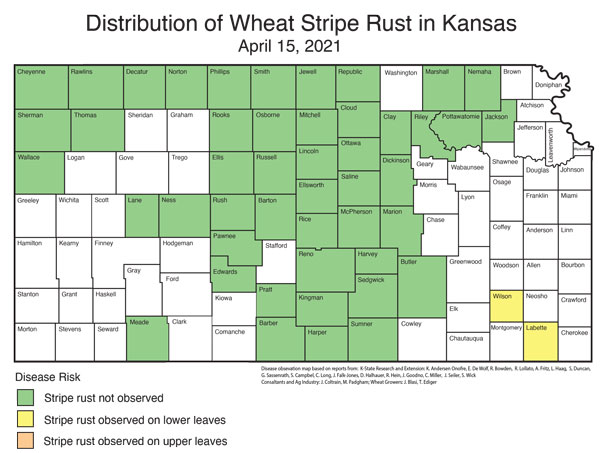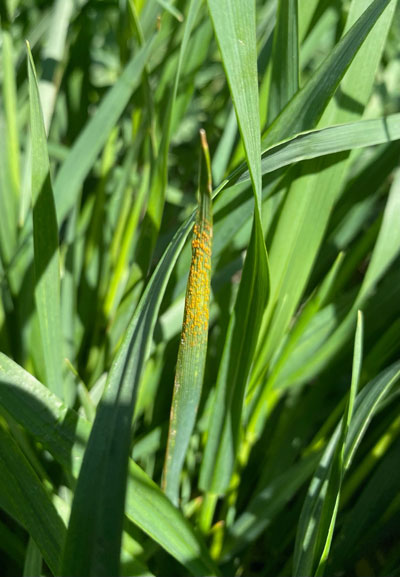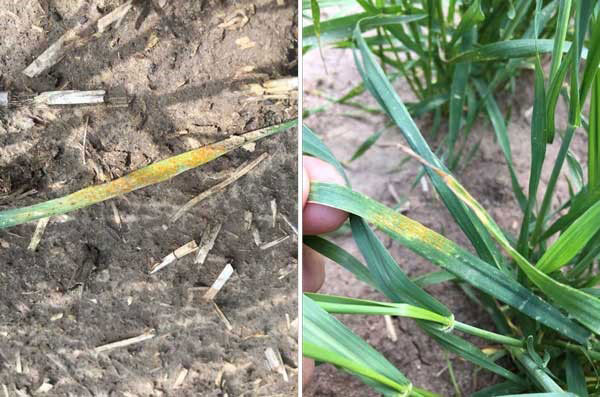A few reports have come in this week from southeastern Kansas of stripe rust at very low incidence (Figure 1). Reports in Kansas are expected to increase in the coming weeks. There were a few more reports of stripe rust (Figure 2) in counties in Oklahoma. Reports from extension agents, crop consultants, and growers are indicating that stripe rust is not active yet in many parts of Kansas.

Figure 1. Distribution of stripe rust in Kansas as of April 15, 2021. Map is based on observations of K-State Research and Extension, crop consultants, and wheat producers in the state. Map created by Kelsey Andersen Onofre, K-State Research and Extension.

Figure 2. Classic symptoms of stripe rust. Photo by Kelsey Andersen Onofre, K-State Research and Extension.
With the wheat crop in south central and southeast Kansas approaching or already at the flag leaf emergence stages of growth, growers are encouraged to be on the lookout for stripe rust and other diseases, such as tan spot. When people think of stripe rust, they often visualize the characteristic bright yellowish-orange lesions on adult plants (Figure 2). Symptoms of stripe rust on younger leaves are often less rectangular because the fungal growth within the plant is not limited by the veins of younger leaves (Figure 3).

Figure 3. Symptoms of stripe rust on wheat plants that are still at the tillering or jointing stages of growth. Note that the yellowish-orange reproduction of the fungus is more clustered and less rectangular than symptoms on adult leaves. Photos by Erick DeWolf, K-State Research and Extension.
Scouting tips
When scouting wheat, it is important to look down within the middle layers of the crop canopy for disease symptoms. Wheat puts out new leaves rapidly during the vegetative growth prior to heading. In some cases, plants may add a new leaf every 7-10 days. These new leaves at the top of the canopy are less likely to express disease symptoms simply because it takes time (10-14 days) for the disease to develop. Focus on leaves that where present over the last 2 weeks. These leaves have a higher probability of infection than the new leaves at the top of the canopy.
More in-field observations will be happening over the next week. Stay tuned for additional detailed reports on the wheat disease status soon.
Please contact us if you detect stripe rust while scouting.
Kelsey Andersen Onofre, Extension Plant Pathology Specialist
andersenk@ksu.edu
Tags: wheat disease stripe rust scouting